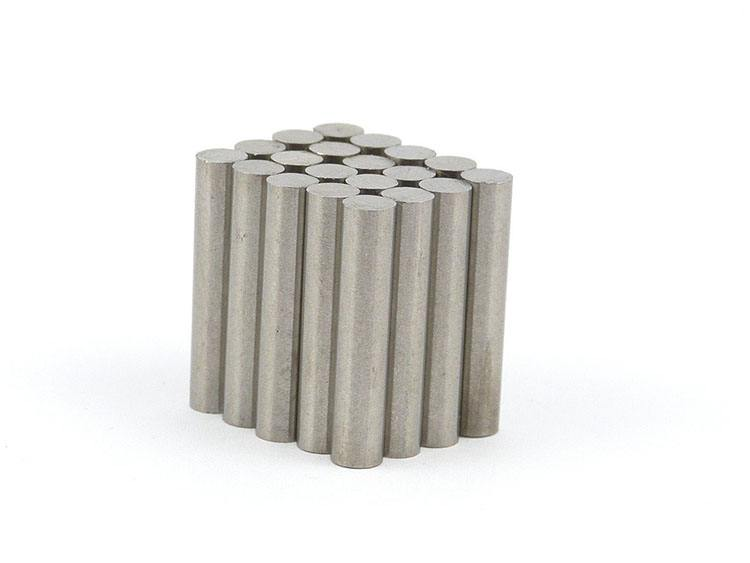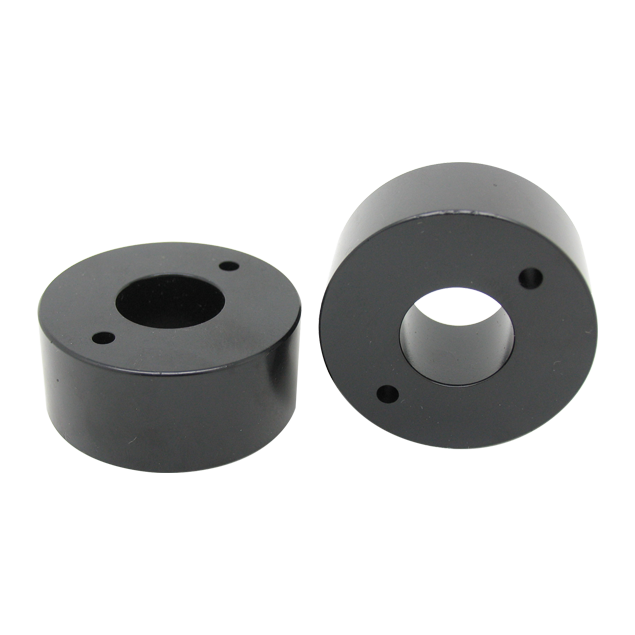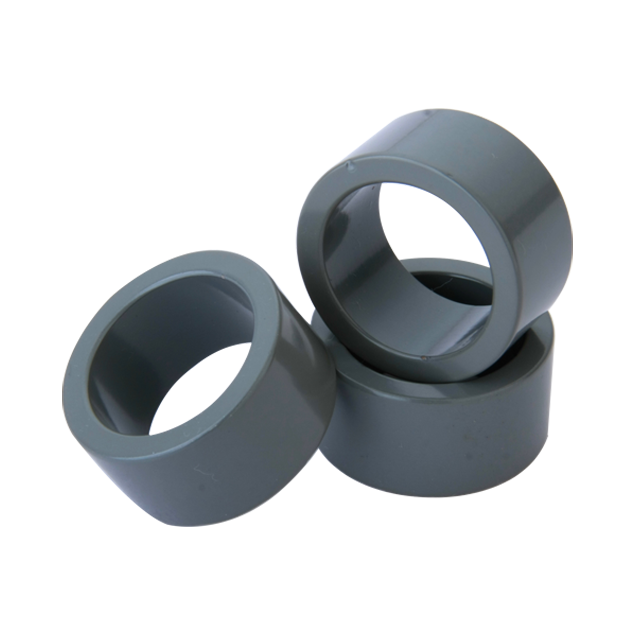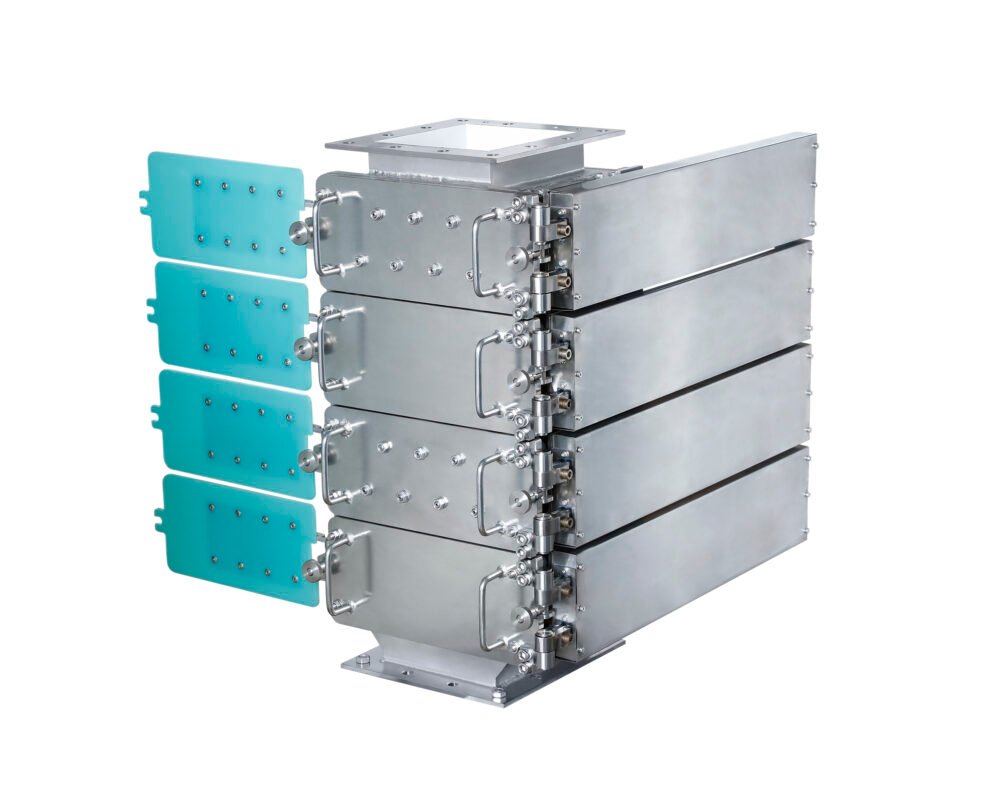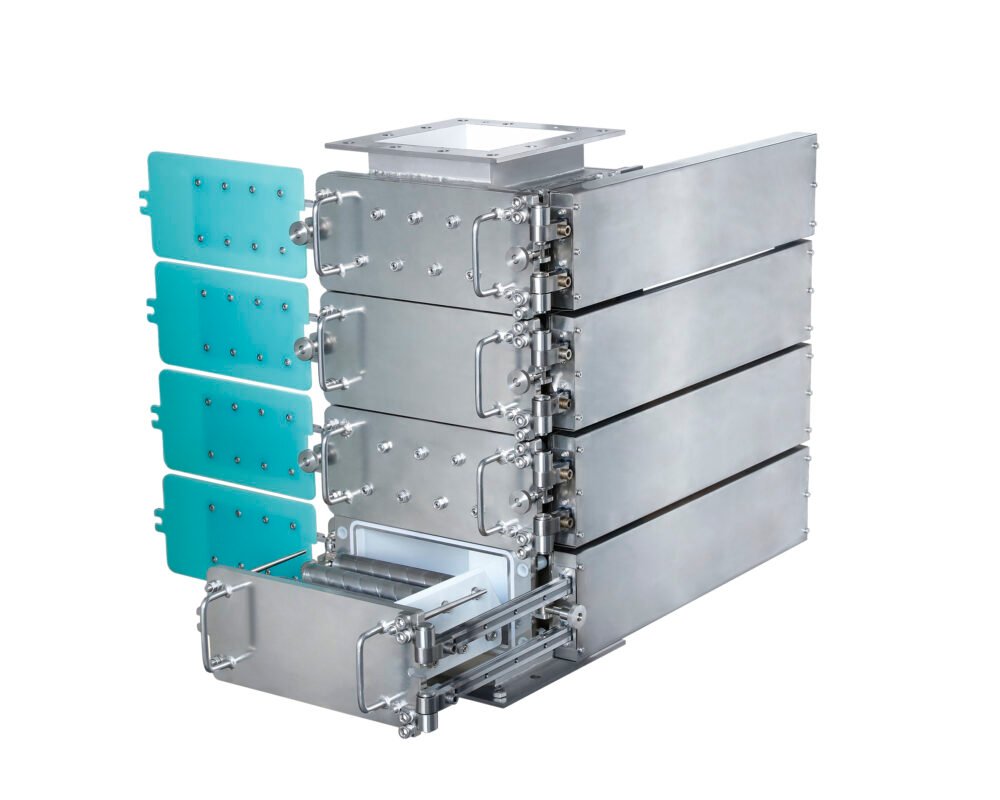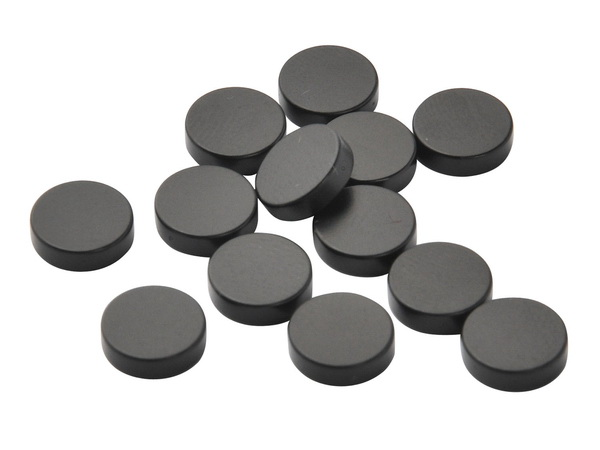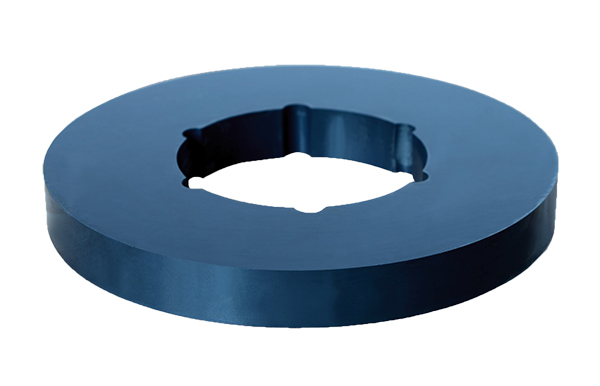Lithium Battery Powder Processing
Magnets play an indispensable role in the metal recycling process and the purification of lithium battery powders. The application of pneumatically operated magnetic bars and rotating magnetic separators effectively removes metallic impurities from lithium powder, preventing potential quality issues during the production of batteries and accumulators. To efficiently recover lithium resources, the primary step is to use magnetic separators to eliminate metal particles, including iron particles and paramagnetic particles, from the raw materials.
Challenges in Lithium Battery Processing
During the production of lithium batteries, the presence of metal contaminants can significantly affect the battery's performance and lifespan. To ensure stable and efficient battery operation, high-purity cathode and anode materials must be used in the manufacturing process. Any impurities, especially metal particles as small as iron oxide or stainless steel, can negatively impact the overall quality of the battery, reducing its performance and shortening its lifespan.
Looking back, nearly a million lithium-ion battery packs were recalled due to minor faults. Manufacturers indicated that these tiny metal particles, if they come into contact with other battery components, could cause short circuits. Therefore, magnets play a crucial role in the production of high-performance lithium-ion batteries and accumulators, both during the extraction phase and the manufacturing phase. Additionally, lithium processing must also address the challenges posed by its explosive characteristics and the small particle sizes of lithium powders.
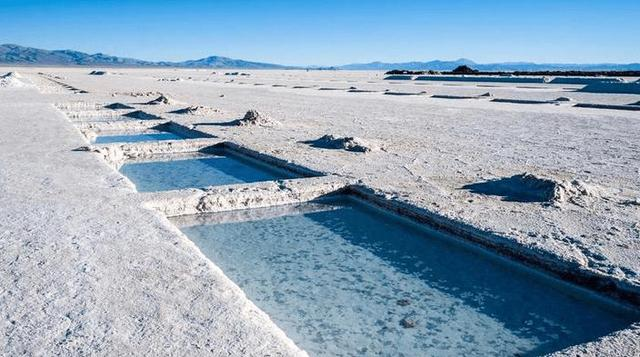
Lithium Carbonate Extraction via Salt Lake Evaporation Process
Magnetic separators ensure that the extracted lithium materials are free of iron contamination. During the extraction of lithium production materials, iron oxide and stainless steel particles can contaminate the material. For instance, during subsequent rail and maritime transportation, powders may become contaminated with iron. To mitigate the risk of explosion, it is crucial to carefully filter iron particles, nuts, bolts, and other impurities from the contaminated powders after transport.
Jinhong offers a variety of iron separation solutions that effectively remove iron contamination from lithium and other raw materials. These powerful magnetic separators are designed to withstand the wear and corrosion caused by lithium powders. Such powders can damage stainless steel mixers, screens, and conveying screws, leading to the introduction of iron particles into the lithium powder.
Lithium Sulfate After Removing Iron Particles and Other Contaminants
The use of automatic magnetic separators can prevent material buildup, thereby increasing production capacity. The small particle size of lithium is one of the reasons for its poor flowability. In many cases, material buildup and bridging phenomena occur at flowing obstructions, including magnetic bars. Bridging not only obstructs flow but also reduces separation efficiency, as captured metal particles can slide off the bars.
By utilizing self-cleaning magnetic bar casings, material buildup can be prevented, ensuring optimal contact between the magnetic bars and the particles. This is crucial because small and often weakly magnetic particles must collide with the bars to be "captured." The Jinhong LH-LX06 lithium magnetic separator is equipped with 48 powerful magnetic bars. These bars, with a diameter of 30 millimeters, possess a deep retention field with a flux density of 12,000 gauss, enabling it to capture not only iron particles but also paramagnetic particles.
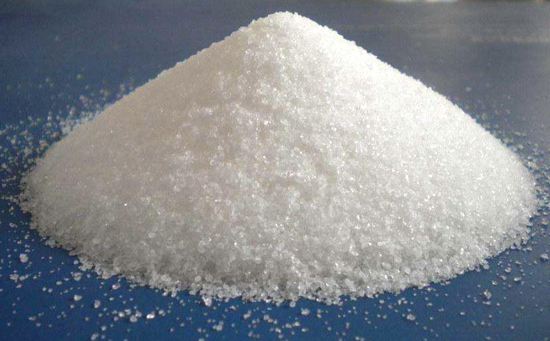
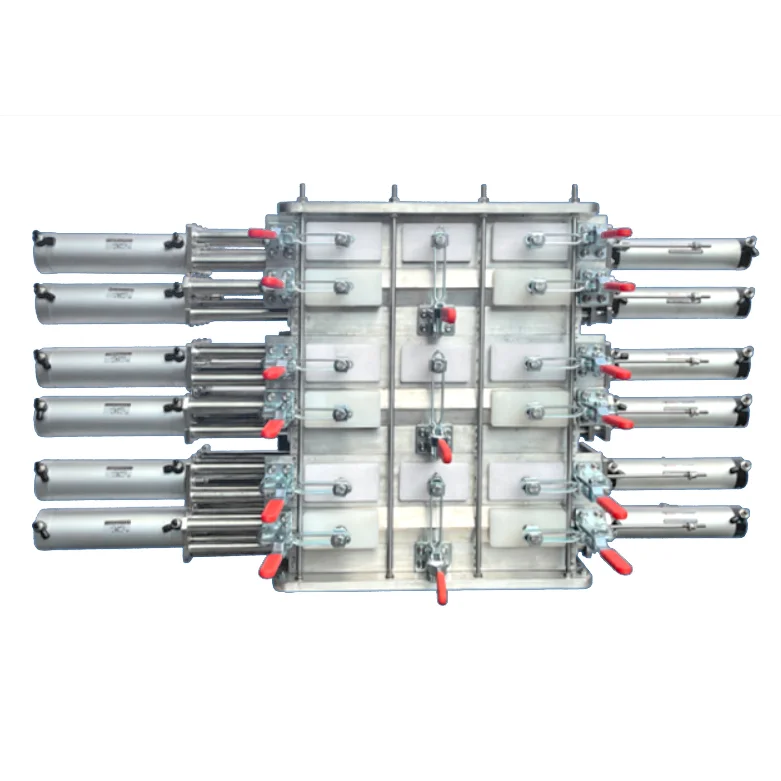
Automatic Magnetic Separator for Battery Powder
This device is designed for the purification of powders used in lithium-ion battery production. As the demand for batteries continues to grow due to the increasing use of laptops, smartphones, and electric vehicles, the global battery market is expanding rapidly. Battery manufacturers are under pressure to improve battery performance while minimizing environmental impacts and costs. Consumers expect faster charging speeds, greater capacity, and longer lifespans, while manufacturers aim for smaller, higher energy density, and more reliable batteries that are safer to produce. In the coming years, the lithium battery and battery pack recycling market is expected to grow significantly as automotive manufacturers strive to dramatically reduce waste streams, aiming for a 100% closed-loop system that generates no waste.
Lithium: A Key Component in Automotive Battery Packs
Lithium recovery plays a crucial role in driving a sustainable future. The current usage of lithium has not yet reached sustainable levels, as the recycling chain is not optimally developed and remains limited in scale. However, lithium has the potential to contribute to green energy storage and help reduce our reliance on fossil fuels. Given the increasing demand for lithium and the potential shortages in the global market in the coming years, battery recycling becomes essential. The challenge of battery recycling lies in separating valuable materials such as lithium, cobalt, and nickel.
Valuable Minerals in Lithium-Ion Batteries
Traditionally, many cobalt-rich batteries are recycled through pyrometallurgy (smelting) to recover valuable cobalt. However, with modern battery technology, the usage of cobalt is gradually decreasing, and the focus of recycling is shifting towards valuable lithium. Magnets play an important role in the mechanical stage of the recycling process prior to hydrometallurgy (acid dissolution). After crushing, the material undergoes screening and magnetic separation, followed by washing residual flow and thermal treatment before entering the chemical processing stage. Hydrometallurgical recovery can achieve lithium, cobalt, and nickel leachates with up to 99.6% purity. This method also recovers copper, manganese, iron, and aluminum. After the chemical separation of minerals, lithium, cobalt, and nickel leachates can be magnetically filtered, leaving only pure, non-magnetic lithium.
Currently, this process has a lower appeal compared to the relatively low costs of lithium mining. However, recycling technology is advancing rapidly, allowing the industry to potentially offset the deficiencies of mining. This approach helps make the value chain of industries such as automotive and consumer electronics more sustainable.
Belt Magnets for Separating Iron Particles from Ground Ore Powders
These magnets are essential for protecting machinery by separating iron particles from ground ore powders. Specific tests tailored to customer needs are conducted to achieve optimal results.
Addressing the Complexity of Battery Production
Given the complexities of battery production, finding suitable solutions can be a daunting task. Therefore, Jinhong believes it is essential to conduct testing tailored to the specific product processes of our clients. We start by clarifying your needs and available options. We work closely throughout the entire process and provide reasonable suggestions as necessary, aided by FEM magnetic calculations. This way, you can gain a clear understanding of your position and the magnetic solutions that suit your purification or recycling needs.
Invitation to Collaborate with the Growing Lithium Industry
With the thriving lithium market, we look forward to partnering with companies in the lithium processing sector. We are committed to contributing to the development of optimal battery powder magnetic separation technologies through innovative magnetic solutions. We eagerly seek to co-develop magnetic separators that meet all your requirements and ultimately lay a solid foundation for new industry standards.

